What To Do After You Implement New Staffing Software
March 23, 2022
If you choose to use staffing software to help run your business then you are “automated”. However, automation offers a variety of return, all based upon software features that are available and implementation of processes within the organization.
New staffing software is exciting but how come it always looks better and more affective when the salesperson is performing the demonstration? Running it “live” sometimes doesn’t work so well. It can be confusing and difficult to model to the operation.
When it comes to actual use the software may seem time consuming and cumbersome. Users do not know how to approach it and many of the features that were viewed as “hot” in the demonstration phase are rather impractical from an operational point of view. What happened?
New Staffing Software is Good for Your Business
First, keep in mind that anything new will add a bit of stress. Regardless of the amount of research and preparation, introducing a major factor into any operation is going to rattle a few cages. Although difficult to deal with at the time, long-term this can be a good thing.
How’s Your Training Process?
If your users are completely lost when they begin to operate the staffing software, dissect the training. Was it hands on? If your users were simply watching a “webinar demonstration” they were not trained. No one could be expected to operate an extensive piece of software without actually doing a test drive in a hands-on training class. Hands-on training will cost a bit more but more than outweigh the cost of downtime when users do not know what to do and may never gain full knowledge and use of the software product investment.
We can probably agree that “most users” can figure out the basics of using staffing software even without training. Although they can never be expected to use the software to its full extent, users will be able to get a few things done. The initial stress will begin to fade with time. There is only one problem here. The business will not financially benefit as much as it should from using a software product. No matter how small the investment may have been, you have to seriously question whether it was worth it.
Under another scenario, let’s assume everyone got their hands-on training and are able to use the staffing software just fine. The only problem is that it feels awkward. “Wow” features are not being used and users feel these features are irrelevant to the business at hand. This problem can be caused by software that does not address the specific needs of the organization. There are a lot of great “buzzwords” and fanfare in the software marketplace today.
Focus on Individual Employee Needs
You have to ask yourself, “What do I need to get the job done?” Focus on your needs when making a software decision. Let your needs dictate the software demonstration, not the whistles and bells the software salesperson wants to show you. Always do a specific “needs analysis” before shopping for software so you won’t be disappointed when the software is put into use at your company. Make sure the majority of your needs are addressed in the software demonstration.
Keep Your Expectations Realistic
Let’s look at another situation with new software. Are you trying to mold it into something it is not? Are you attempting to use it like you used your old software? If that is the case, you may as well have continued using your old software. Each staffing software product has its own personality. Make sure you like the software before making a commitment.
Odd as it seems, you need to like the look and feel of the screens. Don’t settle thinking that you will get used to it. Either you like it or you don’t. But keep in mind that you will have to make a few concessions. No software will have exactly what you want. Select something that has “most of what you need” and feel comfortable with. Then use it as the software manufacturer recommends.
Design Processes For Your New Staffing Software
Users cannot each have their own “ways and means”. One of the most valuable assets that software has to offer is the ability to tie the organization together. This provides a priceless value. The software stores data and data is the real asset of any staffing and direct hire business. If an individual leaves the organization, the data stays.
This data should communicate to anyone what the status is of any given applicant or client. Consistent processes within the organization will ensure that this happens. Make sure every job order, client, applicant and conversation gets entered into the system.
Last, what if the software you implemented just does not have what you thought it would? You looked at the line items and the software “appeared to have everything” that more expensive software had. However, in actual use the software has a weak framework and actually can do the basics and only that. In software as with everything else, you get what you pay for. If you want a robust software with personalized support and updates, with the ability to grow as your company grows, it costs more for the software manufacturer to be able to provide those items.
For more information about staffing and recruiting software, take a look at some of the services provided by Automated Business Designs, Inc.
Terri Roeslmeier is president and CEO of Automated Business Designs, Inc., software developer’s of Ultra-Staff EDGE staffing software for the staffing and direct hire industry. Ultra-Staff EDGE is a full-featured business solution with components for front and back office, web portals, onboarding, mobile, data analytics, and scheduling.

